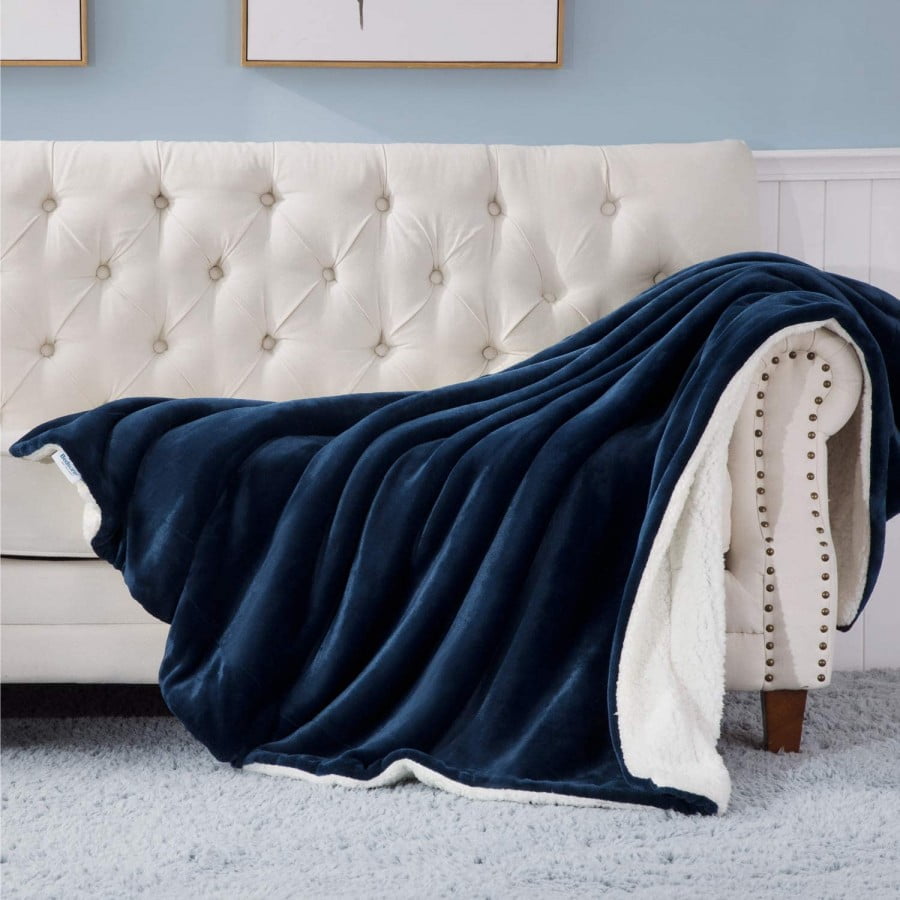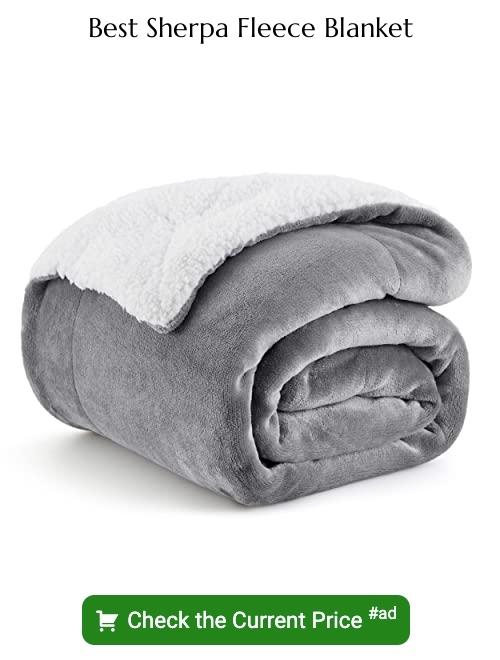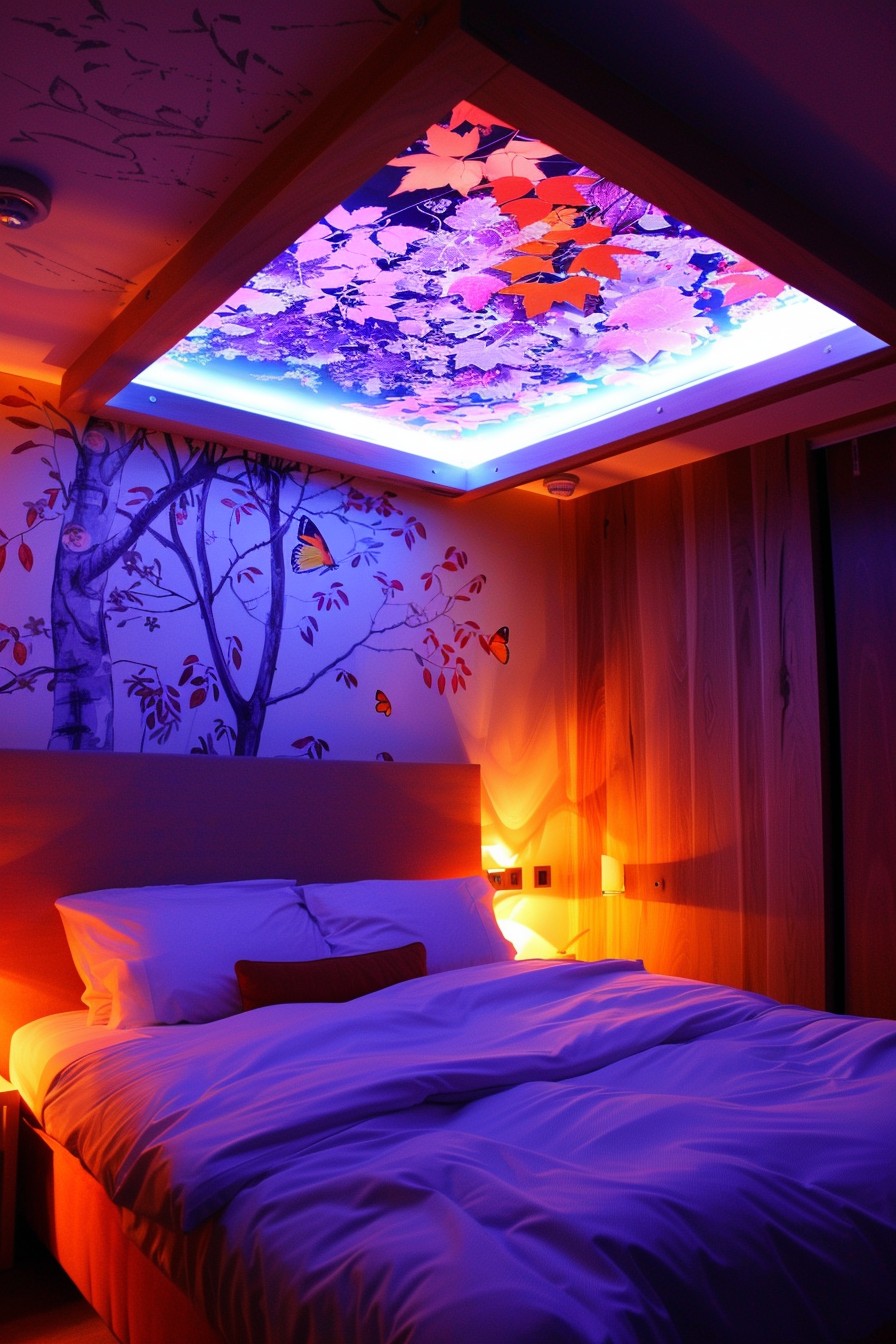Last updated on
Deciding between a fleece and Sherpa fleece blanket? Here are the main differences that will help you decide which is better.
First of all, Sherpa is a type of fleece. So the main difference is in their qualities. Sherpa is designed to mimic wool, and it is a double-sided fabric. This makes it softer and warmer.
That doesn’t mean that Sherpa is necessarily better than regular fleece (there are more types of it too). It is just different. We’re going to cover all of their differences and qualities in this article. Read on!
A couple of shopping links are included in this article to illustrate with examples. They earn us a commission at no expense to you.
What is Fleece?

The origin of fleece material is the Malden Mills corporation. This company first used polyester to create this new fabric, and it took many experiments before perfecting the material. It took some time, but it eventually became insulation in fabrics. It is comfortable and soft because of its quick-drying abilities as well as its insulation power when wet. In 1982, Malden Mills invented and introduced fleece fabric which consists mainly of polyester fiber, to the textile industry.
What is Sherpa Fleece?

Sherpa Fleece is a type of synthetic fleece made from 100% polyester and mimics natural wool properties. The fabric is soft and lightweight, so it works well as a coat lining and for baby blankets. The material was named after the Sherpa mountain guides in Nepal.
This fabric is double-sided, in that the smooth side is usually tightly knit while the fluffy side is soft and resembles sheep fleece. You may like Sherpa because of its wool-like qualities without costing as much money as real wool. You can stay nice and warm but still have enough money left over for other things when you go out shopping during the winter season.
Sherpa fleece is often used as a premium material in luxury throw blankets, and heated blankets, and of course, faux fur blankets, among other types of blankets.
The Difference Between Sherpa and Fleece Fabric

Sherpa is part of the fleece family, but it has some unique properties. It can be light, warmer, thinner lining, which dries easily. It may also be softer and warmer than a fleece blanket. Sherpa is part of the fleece family but has some different properties, like lighter weight and quick-drying from its fabric made of 100% polyester high loft fleece. There may sometimes be a misconception that sherpa is just layered wool since it is double-sided.
Sherpa Blanket vs. Fleece Blanket
The main difference is that the Sherpa fleece blanket is double-sided and tends to be softer.
A fleece blanket can be made with different types of material instead of Sherpa, and a Sherpa type material can also be used in a normal fleece blanket.A standard fleece blanket can either use one type of fleece or the other, but a Sherpa type requires both.
One side of the fleece blanket is a Sherpa fleece. This type of modification that the Sherpa and fleece blankets are combined provides extra warmth on cold nights. If you make spills, both materials dry quickly and will not lack in softness or insulation powers.
Is Sherpa or Fleece Warmer?
The Sherpafleece is known to be perhaps the warmest fabric thanks to its wool-like properties. This type of fleece is usually used for lining and not as a part of a coat or jacket. It is made from 100% polyester materials, has less stretch than the Lycra-fleece, and has a plastic feel. There are also different types of it.
Is Sherpa or Fleece Softer?
It is up to the individual’s preference for comparing how soft fleece is because different types produce different qualities of softness. Sherpa fleece is known for being very fluffy like many people equate “fluffy” with “soft.” However, other types of fleece, such as Microfleece and French terry, maybe softer.
The Different Types of Fleece
Fleece, one of the materials used in blankets, come in different styles and fills.
Cotton fleece is what is typically used in most blankets, but polyester fleece and Lycra spandex fleece can also be used. They are smooth and plush on the outside, but well-suited to repel moisture more than cotton. Polyester fleece has a slight sheen to its exterior while Lycra spandex has blended fibers that allow stretch from the cotton.
Microfleece is a thin, lightweight, water-resistant alternative to wool. It provides excellent warmth while remaining breathable and quick drying. Polar fleece has no fill and resembles just loosely woven nylon rather than knit (and has a much heavier weight). French terry fleece is a thicker version of this material which feels soft (unbrushed) on the skin.
And last but not least, there’s the Sherpa fleece.
Microfleece Blankets and Premium Sherpa
Microfleece is fleece made of microfibers and it is a material that is not too heavy or too warm, and it weighs less than 200 grams per square meter. Premium fleece would be heavier and warmer than this material. The only downside to it being thinner, microfleece does not give off a foul odor or pill over time as some other fabrics do.
Sherpa and Fleece Trends
Sherpa and fleece are popular fabrics that have found their way into home design. Sherpas are softer, while fleeces are more tightly woven; each has its own pros and cons depending on your needs. Sherpa is also warmer but less breathable; fleeces are the opposite.
The Warmth Difference Between Fleece Types
Use the Polartec scale to determine what fabric is best for you. It indicates fleece weight. The 100 (light), 200 (medium), and 300 (heavy) grades. Naturally, the higher the number, the warmer the fleece. These grades are specified by the manufacturer.
The Sherpa fabric is warmer than other fabrics, and the fibers in it are closer to being tightly compressed together and are shorter. The fleece on Sherpa’s back gives it a warm feeling, but this means that there will be more shedding when stitching cuts are made to the fabric. They both have 2-way horizontal stretch which helps make them comfortable for their wearer. The Sherpa can be machine washed but cannot be tumbled dried.
Recap





